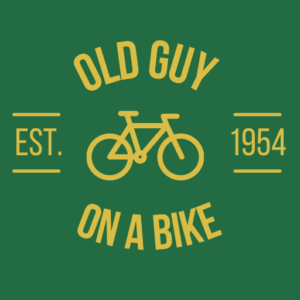
(25 miles)
Heading west back to Lancaster I passed the New Life Community Preschool, then turned around to snap this picture. I could be wrong, but isn’t there only one “E” in “Montessori”?

Good news: there is indoor parking.
Bad news: it’s on the second floor.
Given the pristine condition of the lawn on this side of the building, it appears that the garage door is rarely used.

I wonder how they decided to change the name from Cross Keys to Intercourse?

I’ve never had home made root beer. If rain wasn’t heading this way I would have stopped to try some.

As I approached a place offering buggy rides I saw the buggy driver was shutting the back door of a nearly-filled buggy (not the one shown). I called out from my bike “got room for one more?” and the driver simply replied “yep”.
I paid my $23 at the cashier’s stand and sat next to him in the front seat.

Daniel, the buggy driver, was a friendly 50-ish gentleman who sat on the right side of the bench. We talked about many things, and I asked him about taking pictures. As expected, he explained they don’t allow pictures to be taken of a person, preventing that person from thinking they are more important than someone else.
After a while I felt comfortable enough with him to ask him if he even had a wedding picture. He told me I am not supposed to ask that question. I apologized, but after we chatted a bit more he volunteered that maybe his wife does have a wedding day picture.
Attached is a picture I took from the front of the buggy.
Daniel had explained that a lot of the young people do not want to farm, and a lot of the farmland is being rented by corporations with large machinery. Shown below are photos I got off the ‘net. Below on the left, an Amish farmer can harvest ears of corn one row at a time with a corn picker pulled by one or maybe two horses. On the right, the corn-on-the-cob is collected on a horse-powered wagon, stored in a crib near the barn, and later “shelled” (removing the kernels of corn from the cob) as a separate step.
In the photo on the right, notice the man in the barn covering his face to prevent it from being photographed. (Again, I didn’t take the picture; I found it on the ‘net.)

In contrast, a corporate farmer driving a combine can harvest 12 rows in one pass, and at the same time deposit the shelled kernels into a companion trailer travelling at his side.

Daniel said the young people are moving into manufacturing, and as we toured the area he showed me two new buildings used by Amish manufacturing companies. In the west suburbs of Cleveland I have see crews of young Amish men building several homes.
The tour ended where it started, and as I sat out a cold rain sitting under a shelter wearing two sweatshirts under my rain jacket I thought about my conversation with Daniel.
A century ago, Amish farmers and their English (non-Amish) neighbors used the same technology: horses, relatively simple mechanical equipment, and lots of manpower. The single-row corn picker and wagon of corn-on-the-cob shown earlier could have been seen on an Amish farm or an English farm; the Amish and English completed as equals.
Today, I don’t see how a single row corn picker and a horse-powered wagon of corn-on-the-cob can compete in the marketplace with a 12-row combine and a tractor-pulled trailer of shelled corn.
When the rain slowed, I finished the last few miles to the motel in Lancaster.
